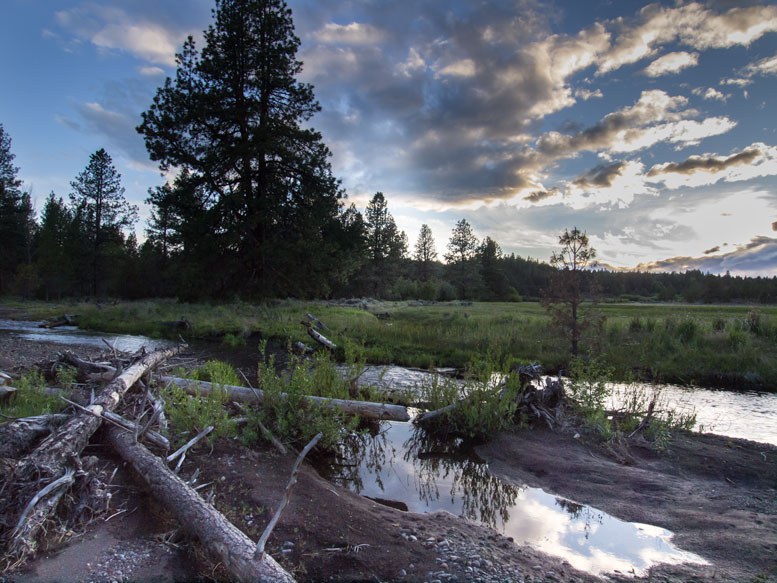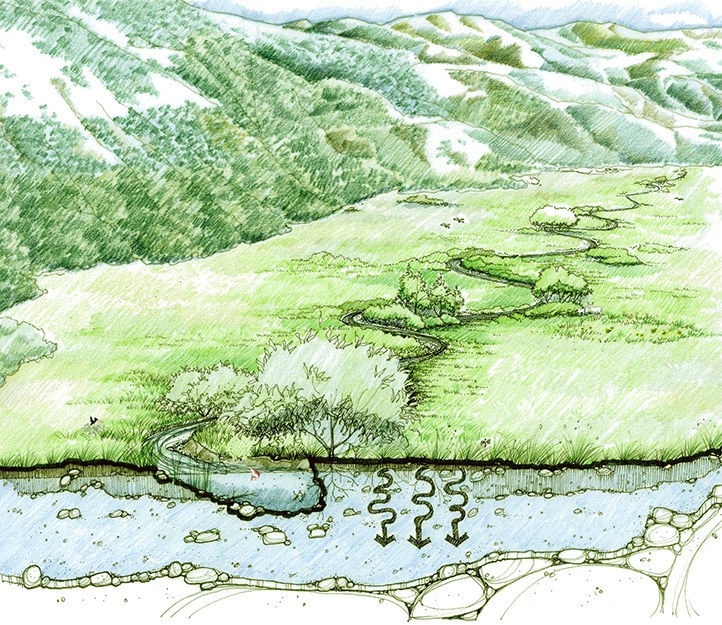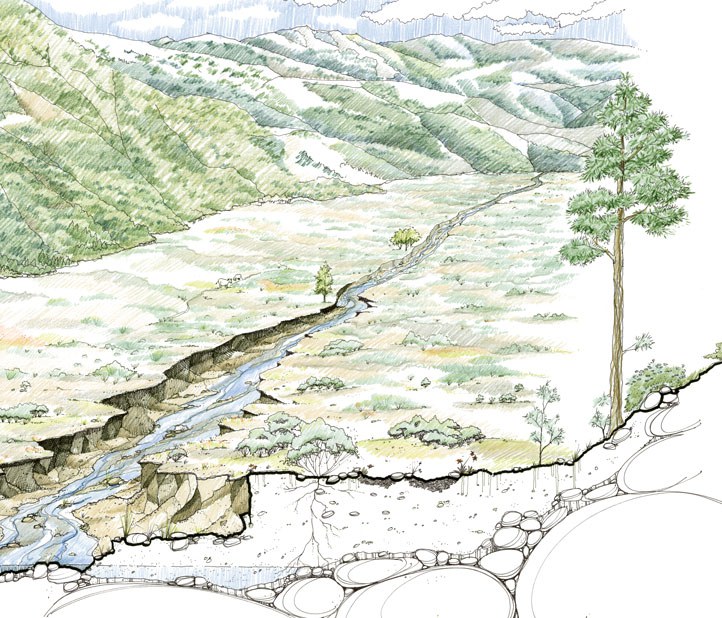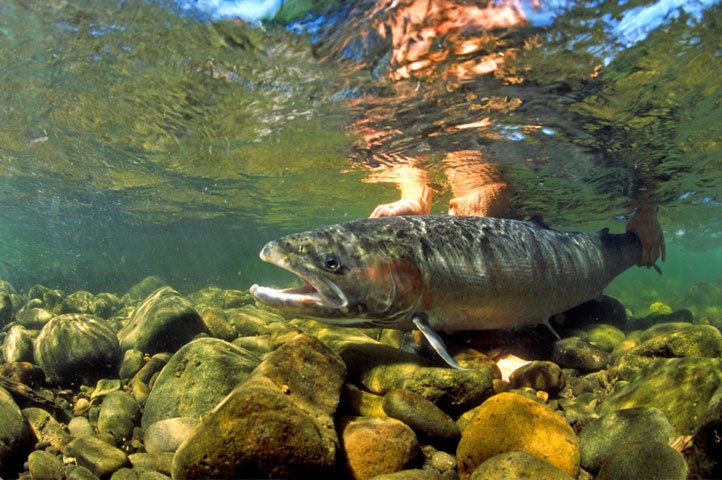Whychus Creek is 41 miles long from its headwaters in the Three Sisters Wilderness to its confluence with the Deschutes River. For most of those miles, Whychus Creek roars and drops through narrow, steep, rocky canyons. Only six miles of the creek run through broad, level meadows—a type of habitat that is biologically rich and rare in abundance.
Only a small portion of Whychus Creek provides this critical meadow habitat. The Land Trust has worked for decades to protect these important places. Camp Polk Meadow Preserve is one of these special sections, and the meadows at Whychus Canyon Preserve and Rimrock Ranch are another. What makes these meadows so special?
- Historically, meadows along Whychus Creek were places where water could escape its canyon confines and slow down and spread out. During times of low flow, the creek would meander through valley meadows and make its own path across these low gradient sections. During high flows, the creek would spill over its banks, flooding the meadow and depositing water along with nutrients and sediment that recharge the soil and plants that grow there.
 Whychus Creek at Camp Polk Meadow Preserve. Photo: Tim Cotter.
Whychus Creek at Camp Polk Meadow Preserve. Photo: Tim Cotter. - These meadows act as sponges, recharging groundwater and providing clean, cold water during times of year when it is most needed. As streams flow through a landscape they release water into the surrounding land. This water is stored and banked during times of high flows like in spring when snows melt. Come summer, as flows drop and temperatures rise, the meadow releases this cold, banked water back into the creek bringing stream temperatures down and water quantities up. This in turn improves habitat in the creek for fish and other wildlife, but also keeps a diverse meadow habitat lush and rich with a diverse plant community even in our driest months.
 Healthy meadow. Drawing: Restoration Design Group.
Healthy meadow. Drawing: Restoration Design Group. - Wet meadows also support a higher diversity of grasses, shrubs, and trees that found on drier sites. Cottonwood groves, for instance, thrive in wet streamside environments. When a creek can no longer flood or recharge its adjacent meadow, the groundwater table drops, stranding plants and trees that require wetter ground and reducing overall plant diversity. This in turn removes critical habitat for birds and other wildlife. Wet meadows with abundant streamside and meadow plant communities, provide important habitat in our high desert. Wildlife such as songbirds, small mammals, deer, and elk use this vegetation to hide from predators and nest or rear their young. Nearby wetlands provide homes for amphibians and waterfowl.
 An unhealthy meadow where groundwater has dropped so low, no plants can grow. Drawing: Restoration Design Group.
An unhealthy meadow where groundwater has dropped so low, no plants can grow. Drawing: Restoration Design Group. - Finally, these meadow systems provide the diverse in-stream habitat that fish need to thrive. When a creek can spread out across a meadow it slows down and builds different types of habitat. Think of a slow, meandering creek with deep pools, riffles, side channels, downed logs and abundant streamside vegetation. Slower waters with pools and side channels provide habitat for fish. Salmon and steelhead can hide in deep pools, lay their eggs in shallow rocky parts of the creek, and then their offspring can grow in sheltered side channels.
 Steelhead. Photo: Brian Okeefe.
Steelhead. Photo: Brian Okeefe.
As you can tell, the meadows of Whychus Creek are unique and play an important role in a healthy stream system. We can already see the benefits of restoring these meadows in places like Camp Polk Meadow Preserve. A major restoration was completed there in 2012 and since then the wet meadow system has bounced back dramatically improving habitat for fish and wildlife by leaps and bounds. As the Land Trust continues the creek restoration at Whychus Canyon Preserve and Rimrock Ranch, our goal is similar. It is not only about water in the creek, but the restoration of the meadows and lands that surround the creek, making for a more complete and healthy Whychus Creek!
Learn more:
- Learn more about the multi-year Whychus Creek restoration.
- Wood is good--the importance of woody debris in streams and restoration projects.


